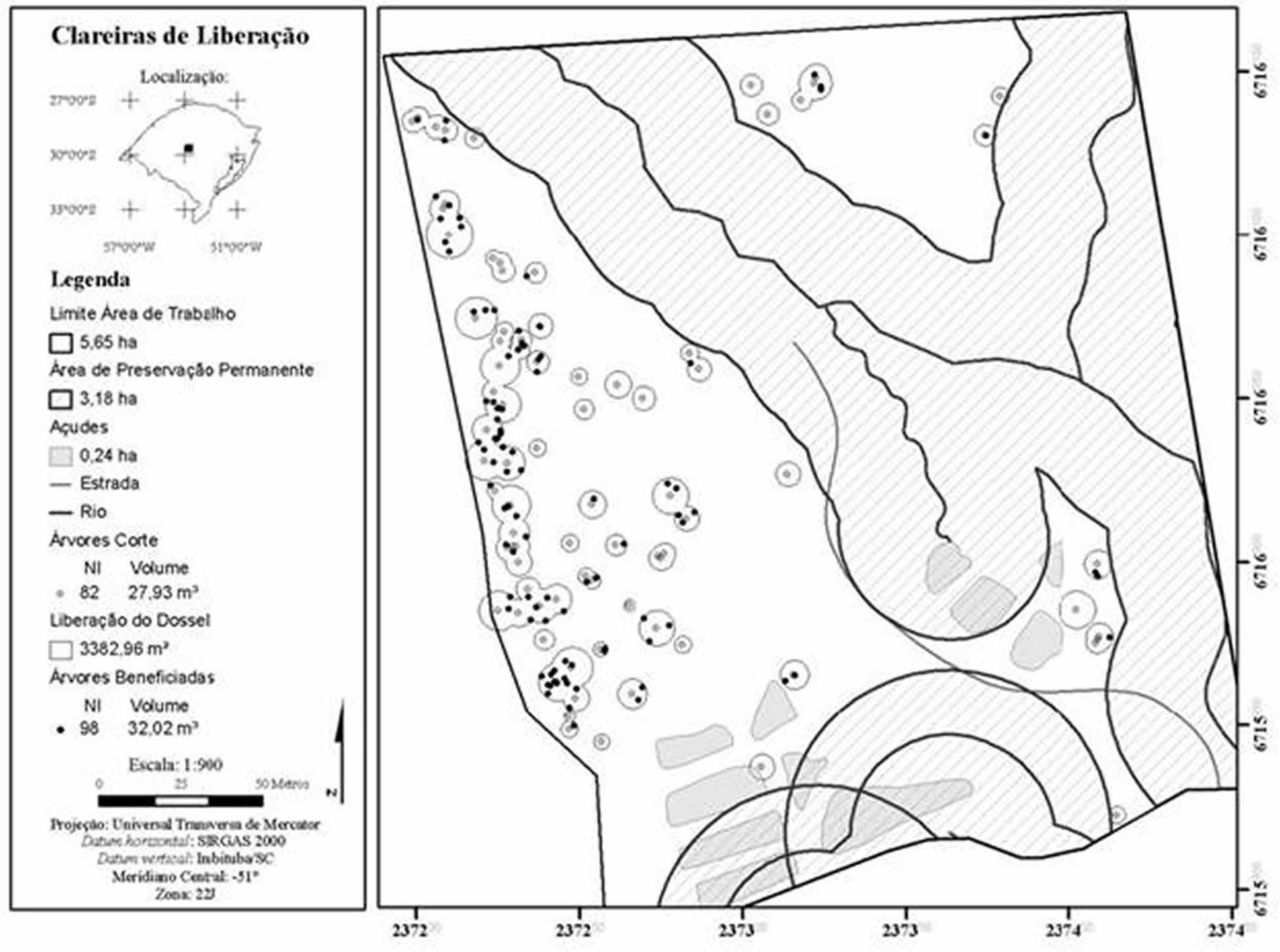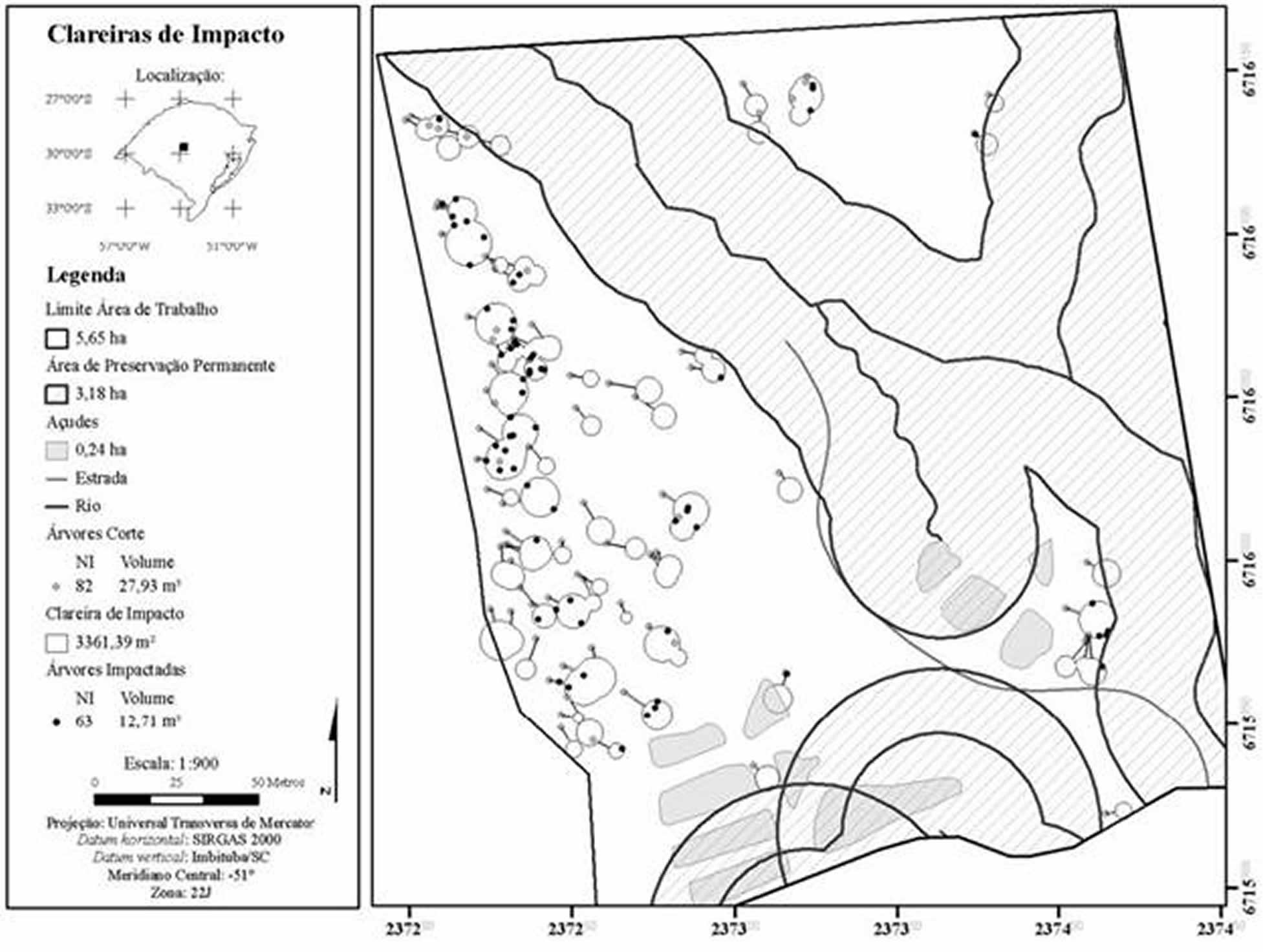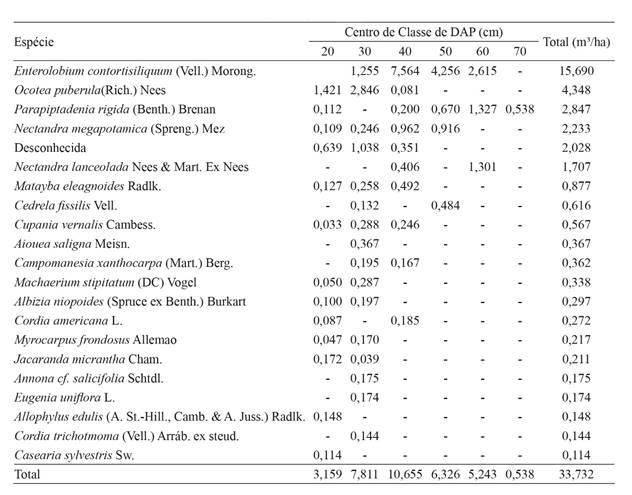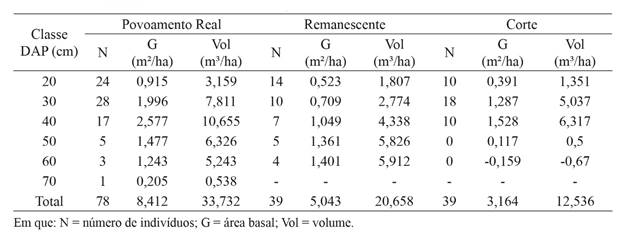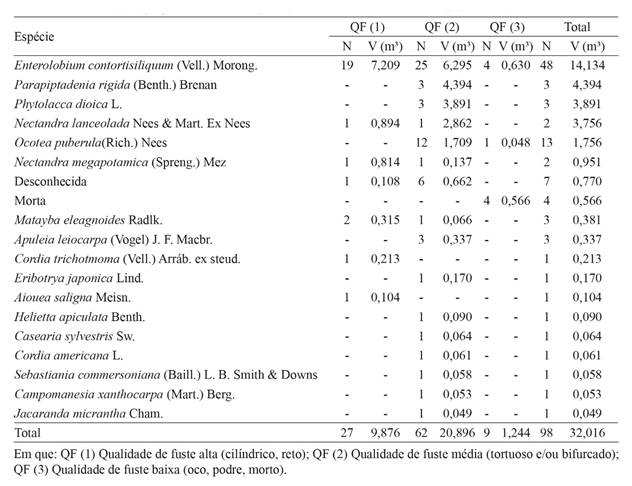ABSTRACT
The aim of this study was to simulate the gap areas formed after logging in a management gardening system, using geoprocessing techniques. In a 5.6 ha of a seasonal semi deciduous forest located in Linha Canudos, Santa Maria, Rio Grande do Sul state, 924 trees were georeferenced using a GPS receiver. In these trees was determined the sustainable cutting rate beyond balanced distribution frequencies by diameter class selecting 82 cutting trees through this analysis. At the selected cutting trees, the releasing areas of canopy gaps and the impacting areas were estimated from falling cutting trees using GIS and reduced impact logging techniques as known as directed tree felling. Altogether, 98 trees (32 m³) will benefit from releasing of canopy and 63 trees (12.07 m³) will be impacted by the falling of the explored trees. Therefore, it is concluded that the geoprocessing techniques applied to native forest management is an important feature when you want to intervene in the forest, aiming to reduce the forest cutting impact.
Keywords:
sustainable forest management; GIS; reduced impact logging; tree falling gaps; canopy gaps

 Thumbnail
Thumbnail
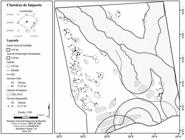 Thumbnail
Thumbnail
 Thumbnail
Thumbnail
 Thumbnail
Thumbnail
